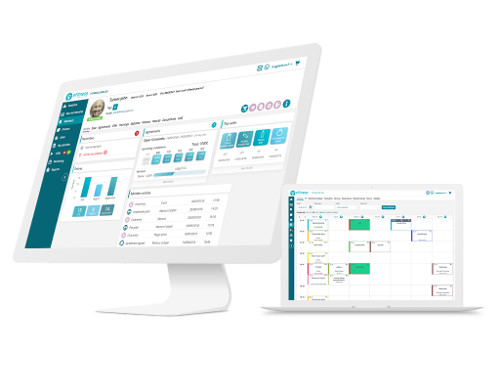“Mistakes are always forgivable, it takes real courage to admit them.” – Bruce Lee.
In the Fitness Industry, most of us are very proud people. Putting our hands up and saying ‘Look, we’re doing this all wrong’, can be very difficult at times. We never know who we may offend and we are not always sure might agree with our views.
While it’s not a mistake to make a mistake, it’s more of a mistake to repeat the same mistake.
Today I want to point out what I believe are some of the industry’s biggest blunders.
So if these look too familiar, you know you are not alone. It’s time to speak up, learn from where you’re going wrong and move on.
- You’re not collecting customer feedback correctly.
For Health Clubs, customer feedback can be viewed as any information provided by your members which offers detail about how satisfied or dissatisfied they are with your facilities and their general experience.
All feedback received should serve as a prompt for improving customer experience and there are a number of ways you can collect it.
Traditionally, Health Clubs may have had a little ‘Suggestion Box’ placed at the front of their gym near the reception whereby customers left anonymous paper notes about their experiences.
The reason for this simple invention was there was no other way to collect anonymous feedback, we weren’t blessed with online surveys, let alone more sophisticated tools, so Operators did what they could.
Today, we do have much more tools at our disposal. Top-performing Health Clubs understand the role member feedback plays in the running of their facility and will consistently listen to the voice of their clients.
An NPS tool brings all those anonymous pieces of paper to the online sphere. This enables your Health Club to carefully scrutinise your feedback data at the click of a few buttons.
If you want to stay ahead of your competition you should never stop listening to customer feedback whether it is positive or negative. You can’t listen if you have blocked ears, a Suggestion Box is analogous to having blocked ears. An NPS tool ameliorates your ability to hear what your customers are saying.
Are you still running your feedback strategy like a Health Club in 2005? See how to boost your retention rate with NPS here.
- Your cancellation process is leaving a bitter taste.
As a member wishes to leave your Health Club, they will take a series of actions in order to terminate their membership.
An outdated way of doing things was Operators to make it difficult for a member to cancel. By having hefty length contracts and a horde of terms and conditions for a member to follow in order to get out of such arrangements, members had to tread carefully, otherwise further penalties could be applied.
There was a feeling held by Operators that this approach would keep members at the Health Club as it was too much hassle and paperwork for those wishing to leave to actually complete the process.
Nowadays, increased pressure from regulatory authorities such as OFCOM and ASA, means that Health Club Operators can’t get away with their old tricks any more. Even without the presence of such external organisations, customers today are much savvier. Social media and review sites have given everyone a platform to share their experiences.
We live in a world where a personal encounter with a brand matters so much more. Today brands are concerned with building connections and fostering long term relationships with every customer. Your cancellation process should not be viewed as a ‘goodbye forever’, but a ‘see you later’.
Make your cancellation process easy to follow and leave a positive lasting impression.
Is your exit journey ruining your Health Club? I have written a previous article which explores the ‘Re-member experience’ in more depth, here I’ve shared 7 tips for how you win your ex-members back.
- You’re marketing is focused on NO joining fees
A polished marketing and advertising campaign can serve the needs of any Health Club and increase the demand for memberships and additional streams such as Personal Training. However times have changed, and while the need for marketing is still essential, where and how that marketing is delivered has changed dramatically.
When commercial Health Club chains first burst on the scene in the 90s, the way they handled their sales and marketing was a world away from how it is today.
After the turn of the century, prospects trudged through the thick murky waters of the credit crunch and they were caught in the middle of a price war between health clubs.
With disposable income levels at an all-time low, prospects were at their most vulnerable. With health clubs facing fierce competition, lines about limited spaces and no joining fees dominated signage, leaflets and billboards. The absorbable prospects firmly bought into it.
Fast forward fifteen years and it’s not quite the same. If you are still running your marketing campaigns with price as your only focus then you’re not just missing a trick, but a whole show.
Through much more personal, clever and softer content-driven and human-led marketing, you can offer genuine value to your prospects. There may well be a time to highlight your offers, but that’s not all the time.
A good CRM will separate those who are uninterested from those who are keen. This will be much more cost-effective in terms of cost per acquisition and it will improve future relationships with your prospects. Not only that, as you move away from the ‘discounts for all’ approach, it will allow you to sell more memberships at their actual value, thus maintaining your profitability.
From analysing browser behaviour to examining an individuals email open rates, there are a number of ways you can target members with the content they are interested in based on their interactions with your Health Club. These methods convert more prospects than mass broadcasts about price reductions.
Are you still thinking the price of your membership is your only driver? Did you even realise you can market to members based on their current buying state? Move with the times. Read this article here for some more tips on how to execute more personalised, effective marketing.
- You’re adopting an ‘old-school’ retention strategy
The antiquated retention method for the Health and Fitness industry was focused on preventing members from leaving at the point of cancellation.
The problem was that by the time the member had handed in their cancellation notice, their mind had already been made up. As an industry, we were not intervening sooner.
At the same time, and it’s no coincidence, a strong notion was held that when a member had not visited your gym for four weeks or longer, they needed to be removed from all communications. They were classified as a ‘sleeping member’ and once they were put to bed there was no need to wake them.
Many of the Operators may well have looked at the contract length remaining on each sleeping member and been silently pleased if there were 9 months remaining on the slumbering members’ tenure.
Nowadays, many Operators have ditched long contracts for more flexible options, meaning this traditional approach to retention is now a detrimental strategy. Even for those Health Clubs who have maintained their contractual arrangements, one really has to question how this approach will benefit the Health Club in 12 months time.
Through more advanced business intelligence, Operators can run much more effective retention strategies. With so many touchpoints, Operators now have the insight available to predict when a member may be likely to cancel before they even realise themselves and determine how many members are truly at ‘risk’ of leaving your Health Club at any one moment in time.
Do you still have traces of the old school approach? Are you too worried about showing you care for members in case they cancel?
Read my article here on how effectively monitoring activity levels can help you predict who is about to leave your gym, and how you can run a retention strategy with care.
- You don’t know your short term and long term business goals
Goals are powerful for everyone, for individuals, for relationships, for sports teams and for Health Clubs. Goals help us focus our attention on achieving desirable outcomes.
In running a Health Club, one desirable outcome may be profitability. Profitability simply does not happen without acquiring and retaining members. Therefore, if you want to run your Health Club with your goals in mind, you should have daily, weekly and monthly membership targets. You should also have the steps in place, which have been discussed within this article, to know who is at risk of leaving your Health Club so you can step in before it’s too late. This too should be monitored and acted upon daily with Key Performance Indicators pertaining to what percentage of your Health Club is active.
All your employees from your front desk receptionist team to your Personal Trainers prefer to know what the organisation expects them to accomplish; it is goals which provide that direction.
Your Health Club goals should follow the SMART principle, they should be specific, measurable, achievable, realistic and timely. Let’s go back to the profitability goal mentioned previously.
A Health Club saying: “We will be profitable” is not very specific. This doesn’t indicate how profitable? Will you attract enough members, based on your catchment area to achieve that? By when will such profitability be reached?
A better way to state that goal is: “We will attain a 20 per cent net profit margin by the end of 2020, based on sales of 100,000 membership sales and the retention of 65% of our current membership base.” That way, it is possible to plan action steps to reach that goal and adjust the progress toward attaining the goal if necessary.
Goals allow you to create a full roadmap of your business. A roadmap ties all your goals together, giving you a full strategic plan of the business as a whole. Once you have this, it will allow you to prioritise tasks, balance workloads and track progress. Without goals, there is no roadmap. Without a roadmap, it’s like trying to sail the seven seas without a compass.
Decide for yourself, what desirable outcomes would your Health Club like to achieve in the next 12 months? Now is the time to create goals to make those outcomes happen.
Take a look at your goals for the 4 R’s;
Recruitment
Retention
Revenue
Reputation
Read more about why I believe the 4 R’s should be at the forefront of your business strategy.
Closing comments
That’s a rap. If you are making any of these mistakes, some simple tweaks may go a long way to improving your whole customer journey. As the great Martial Arts expert and Philosopher, Bruce Lee advised, admit your mistakes and make your thoughts known to the people in your organisation who have the power to change things.
After all, you’ll never eat all your ice cream, if you keep letting the seagulls pinch your cone.


